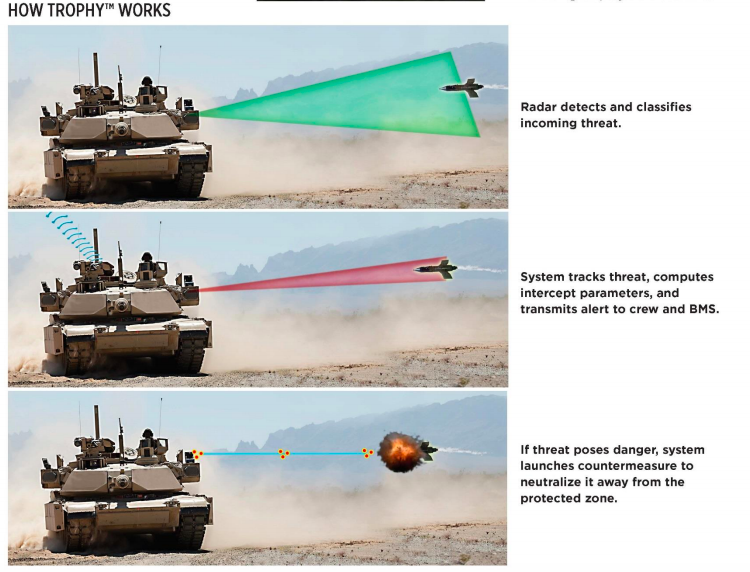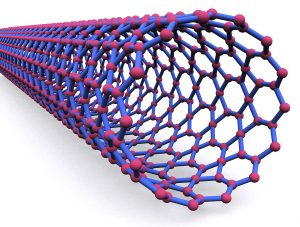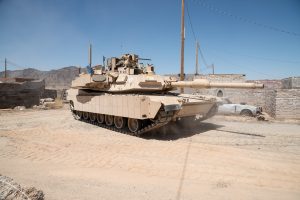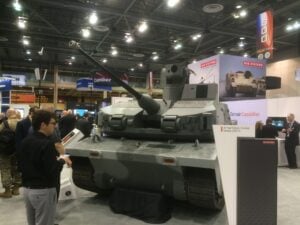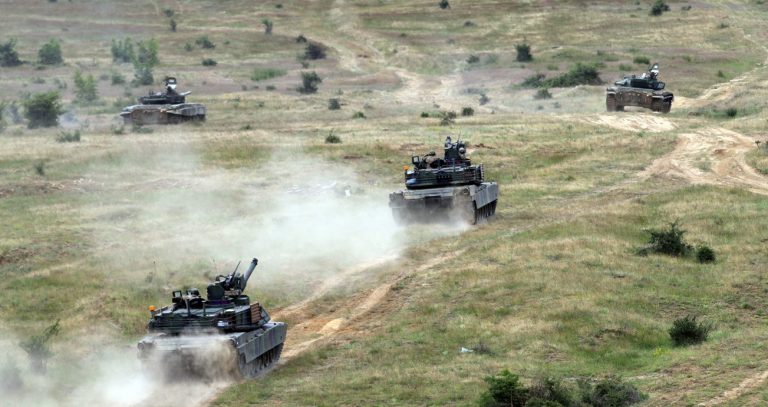“It doesn’t have to be a tank, it just has to be decisive and lethal," Brig. Gen. Richard Ross Coffman answered. "If that is run by a flux capacitor, hovers, and has a ray gun -- and we can make it run at a reasonable cost -- we’ll look at it.
Hovering tanks from Star Wars.
AUSA: By 2023, the Army will decide whether or not to move ahead with a replacement for the M1 Abrams heavy tank. “Anything’s on the table,” said the service’s director for armored vehicle modernization.
Define “anything,” I asked. Are we talking Imperial Walkers from Star Wars? Little robots carrying big missiles?
“It doesn’t have to be a tank, it just has to be decisive and lethal,” Brig. Gen. Richard Ross Coffman answered. “If that is run by a flux capacitor, hovers, and has a ray gun — and we can make it run at a reasonable cost — we’ll look at it.”
That “reasonable cost” criterion, sadly, rules out laser-shooting hover tanks, but behind Coffman’s jocularity is a deadly serious point: The Army wants industry to imagine a wide range of possibilities for a new way to deliver high-powered direct fire. (Indirect fire, at targets over the horizon, belongs to a different modernization team, which is exploring a 1,000-mile supergun). The key thing is to apply maximum killing power at the crucial point in combat, not how you do it. If you have a technically feasible proposal, it sounds like they’ll at least take a look.
“We don’t want to stifle any initiative based on some preset notion of, ‘it has to be tank, it has to have 120 mm or 105 (cannon),'” Coffman told an industry audience at the Association of the US Army conference. “We want options.”
How the Trophy Active Protection System works (Rafael graphic)
New Armor, Active Protection, & Robotics
The Army’s program manager for the Next Generation Combat Vehicle (NGCV), Col. James Schirmer, offered some more down-to-earth details in a later briefing at AUSA.
In his “personal opinion,” the colonel caveated, “I believe that a complete replacement of the Abrams tank wouldn’t make sense unless we have a breakthrough in one of three technology areas”:
Carbon nanotube
Lightweight armor materials: It’s possible that some revolution in materials science — perhaps some application of nanotechnology — would allow a new combat vehicle to be as well-protected as the 60-plus-ton M1 Abrams at a much lighter weight.
Schirmer thinks this is the least likely of the three possible breakthroughs, however, because research into ultra-light armor isn’t moving fast enough.
Active Protection against solid shot: The Army is already rushing to equip its existing M1s with the Israeli-made Trophy Active Protection System, which uses radar to detect incoming anti-tank weapons and mini-missiles to shoot them down.
US Army M1 Abrams tank with Trophy Active Protection Systems (APS) and improved protection for machinegun operator.
But there’s a basic problem with Trophy and the other Active Protection Systems that the Army is exploring for other vehicles. They can defeat high-explosive rockets and missiles by preventing them from exploding properly — by prematurely detonating the warhead, smashing it apart before it detonates, or even warping it so the detonation doesn’t produce a blast wave focused enough to penetrate armor. But, while many companies are trying, no one’s yet proven the ability to defeat a solid metal shot. Why? Because these “kinetic energy penetrators” don’t have any explosive detonation to interfere with, relying on brute mass and high velocity instead.
Now, the high-explosive warheads that APS can deal with are much more common, because they can be fired by low-velocity weapons mounted on light vehicles or even individual soldiers (e.g. the RPG). A kinetic penetrator has to have so much mass, moving at such high speed, that only a tank’s main gun can fire one — but whatever replaces the Abrams will have to fight tanks, even if it’s not a tank itself.
One promising possibility is to use modern anti-tank technology against itself. While old-school kinetic penetrators look like giant bullets, the most powerful ones are dart-like “long-rod penetrators” with a needle nose to help them penetrate armor. It’s easier to warp, break, or deflect the penetrator rod than the solid shell behind it, which means an Active Protection System that at least reduces the effectiveness of long-rod penetrators is a near-term possibility. Such an APS wouldn’t replace traditional armor plate altogether, but it would dramatically reduce the weight of armor that a vehicle needed to carry.
BAE’s Armed Robotic Combat Vehicle (ARCV), originally developed for the Future Combat Systems (FCS) program
Robotic Tanks: Improving armor materials or active protection systems is about ensuring your vehicle survives. But if your vehicle doesn’t have any humans in it, maybe you don’t care. Now, even if you gave a robot tank the same thicknessof armor as the M1 Abrams, the robot would be lighter, because it would be smaller, not needing any interior volume for a crew. (Circuit boards are more compact than people). But you could also create a semi-expendable armored vehicle with a powerful weapon and a minimum of armor.
In fact, before the Future Combat Systems fiasco of 2003-2009, the Army was studying a concept for a disaggregated tank, with the main weapon on one robot, sensors on other robots, and a human crew remote-controlling everything from a safe distance. But this vision ran aground on the limitations of artificial intelligence and wireless networks.
Even today, AI still struggles to navigate rough terrain and distinguish physical objects, so a human operator would have to monitor it constantly over a real-time video feed. Some contractors have gotten such a remote control system to work over a 500 or even 700 meter (1,600 to 2,300 feet) between robot and human, Brig. Gen. Coffman said, — but a tactically useful system would need a range of roughly three kilometers (1.9 miles). The alternative is to make the robot smarter so the human doesn’t need to monitor it constantly, but AI technology just isn’t there yet.
To get an unmanned vehicle — whether remote-controlled or truly autonomous — to “fight as effectively as a manned tank does today….that’s a pretty tall order,” Schirmer said. “It’s not impossible but I think it’s going to take a while to get there.”
US Army M1 Abrams tanks train in Bulgaria
Fortunately, “we have time,” Coffman told the industry audience, because the go/no-go decision to start development on the M1 replacement isn’t until 2023. “We have time to develop options for our leaders,” he emphasized, and more time makes more options feasible.
“Everyone always asks me, you’re building the next tank,” Coffman told reporters after the briefing. “No, I’m building something that’s going to be decisively lethal on the battlefield; I don’t care what that looks like.”
“As a third-generation tanker,” Coffman continued, “I know what a tank is, I know what it can do.” But for the Army’s future decisive lethality vehicle, he said, “if it’s a tank, it’s a tank. if it’s not a tank, I don’t care.”
breakingdefense.com

